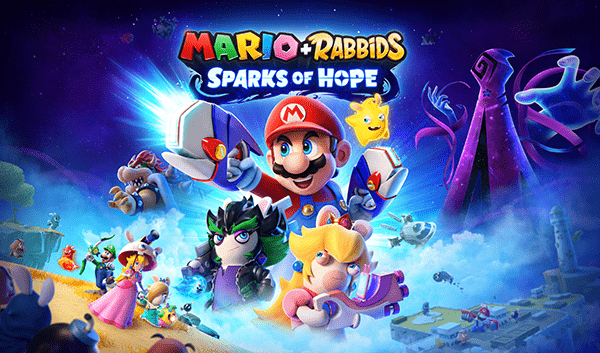The Mario + Rabbids universe returns this week in Sparks of Hope, which manages to recapture the surprising fun of the original, while taking gameplay even further!
If I live to be one hundred years old, I don’t know that I’ll ever fully understand how the random combination of Super Mario and Ubisoft’s screaming/gibberish spouting Rabbids managed to work so damn well. Seriously. On the surface, it’s completely ridiculous, and yet something about it manages to work and provide fairly interesting new stories within the world of the Mushroom Kingdom.
Mario + Rabbids Sparks of Hope
Developer: Ubisoft Milan and Ubisoft Paris
Platforms: Nintendo Switch
Release Date: October 20, 2022
The first game, which launched back in 2017, was a huge surprise for gamers. In short, it whipped a whole lot of ass. No one was expecting such a fun, dynamic, and impressive strategy title from the odd mash-up, and yet it remains an impressive example for the genre in general. Years later, Sparks of Hope has the onerous task of following that up without the benefit of surprise, or novelty of its concept.
Somehow, this sequel manages to feel fresh and fun, while expanding the tactical gameplay into great new territory. It’s pretty great.
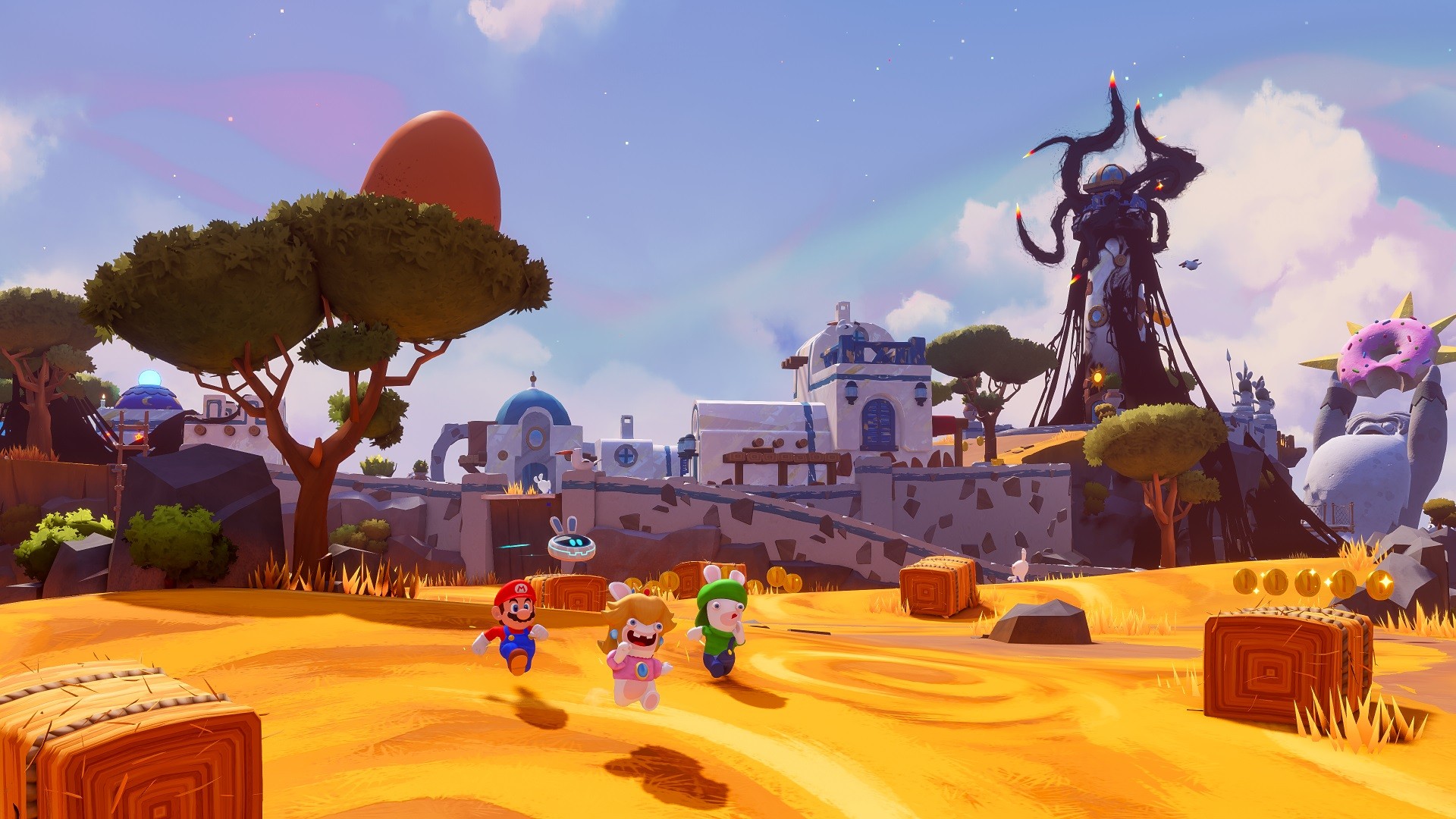
Story Basics
Sparks of Hope picks up shortly after the events of Mario + Rabbids Kingdom Battle. Things have largely settled down, and the inhabitants of the Mushroom Kingdom are adjusting to life with their new Rabbid friends. Just when things seem normal, the villainous Cursa arrives on the back of a spacefaring stingray with ambitions to conquer the galaxy.
In order to do so, she’ll need to gather up all the “Sparks” (creatures that are a fusion of Rabbids and Luma’s from Super Mario Galaxy) in the galaxy. Your task, along with your team, is to hunt her down through the galaxy, visiting different planets as you seek to liberate the Sparks and cleanse the worlds of Cursa’s dreaded “Darkmess.” These are essentially ink puddles that corrupt everything around them.
So yeah, when you really think about it, it almost feels like a combination of story elements from Super Mario Sunshine and Galaxy rolled into something new. It’s quite a bit of fun, and as someone who REALLY enjoyed the story in Galaxy, I was excited to be able to return to that side of the Mario Bros. universe for something new.
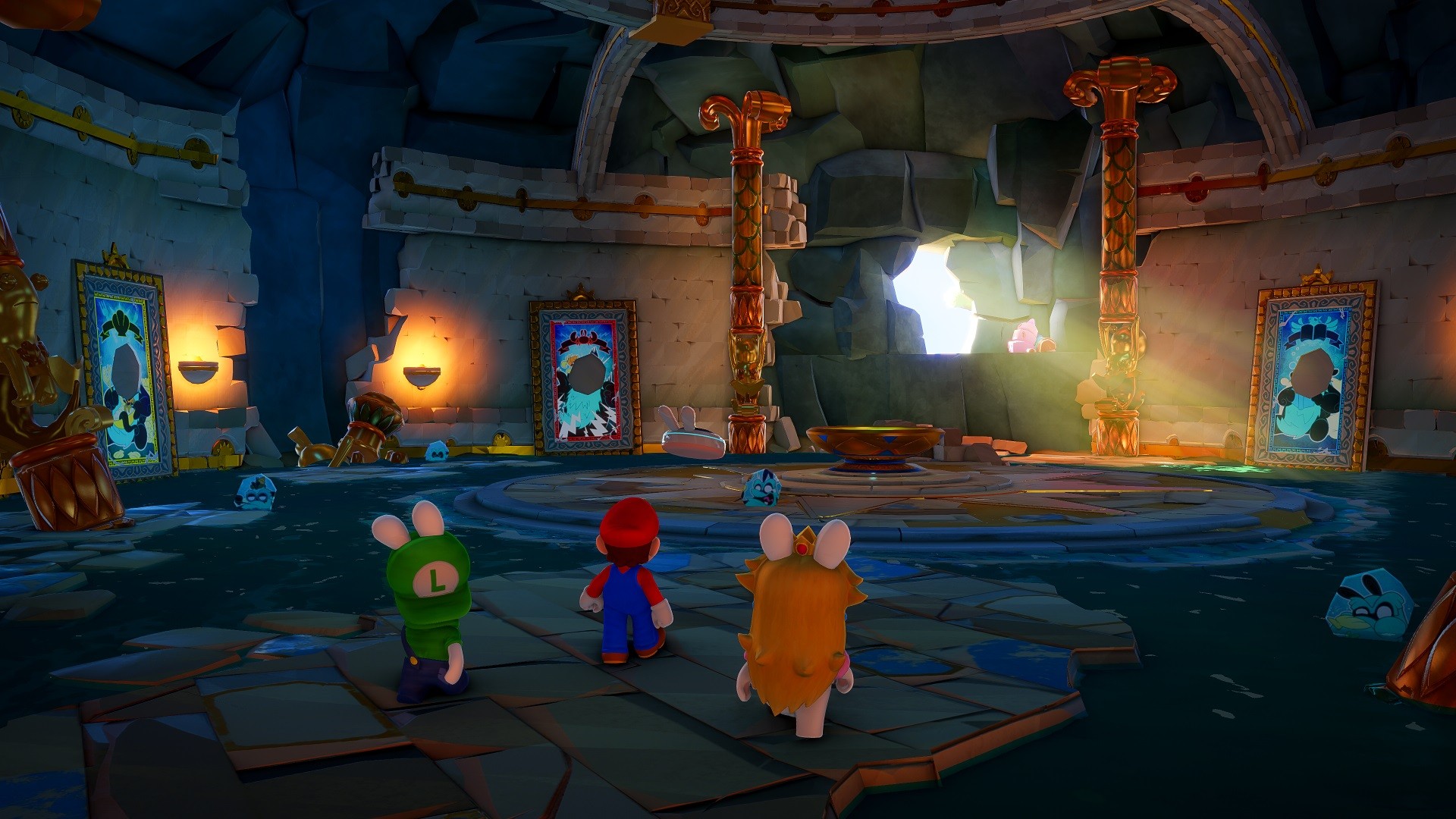
I won’t go much into details on the story in general. Like all Mario adventures, things kick off quickly and you’re thrust into the action pretty quick. That said, the planets you explore (five in total) all have their own interesting backstories and history you can learn about through exploring. Thanks to collectibles to hunt down across the map, some of the NPCs you encounter, and even just taking a closer look at objects you uncover, there’s a hefty amount of lore to uncover.
While saying there are five planets to explore may seem small, Sparks of Hope is anything but. Each planet is packed with things to do, and even if you stick just to the main story missions, you’ll find yourself quite busy between combat and puzzles. That said, the sidequests are pretty fun to deal with and actually feel connected to the main story, while granting you bonuses along the way. Hell, even MORE of the planet opens up once you wrap up the main story missions, prompting further exploration and giving you reasons to come back.
The story isn’t about to win any awards or anything, but it’s quite a bit of fun with plenty of solid gags/humor to go around. It’ll certainly keep you chugging along through battles/levels to see what happens next. Oh, and I absolutely love the brand new character they created for the game this time around (a Rabbid named Edge who was rarely left out of my team lineup). If you had told me one of my favorite new characters in this game would be a Rabbid, I wouldn’t have believed you. Yet, here we are!
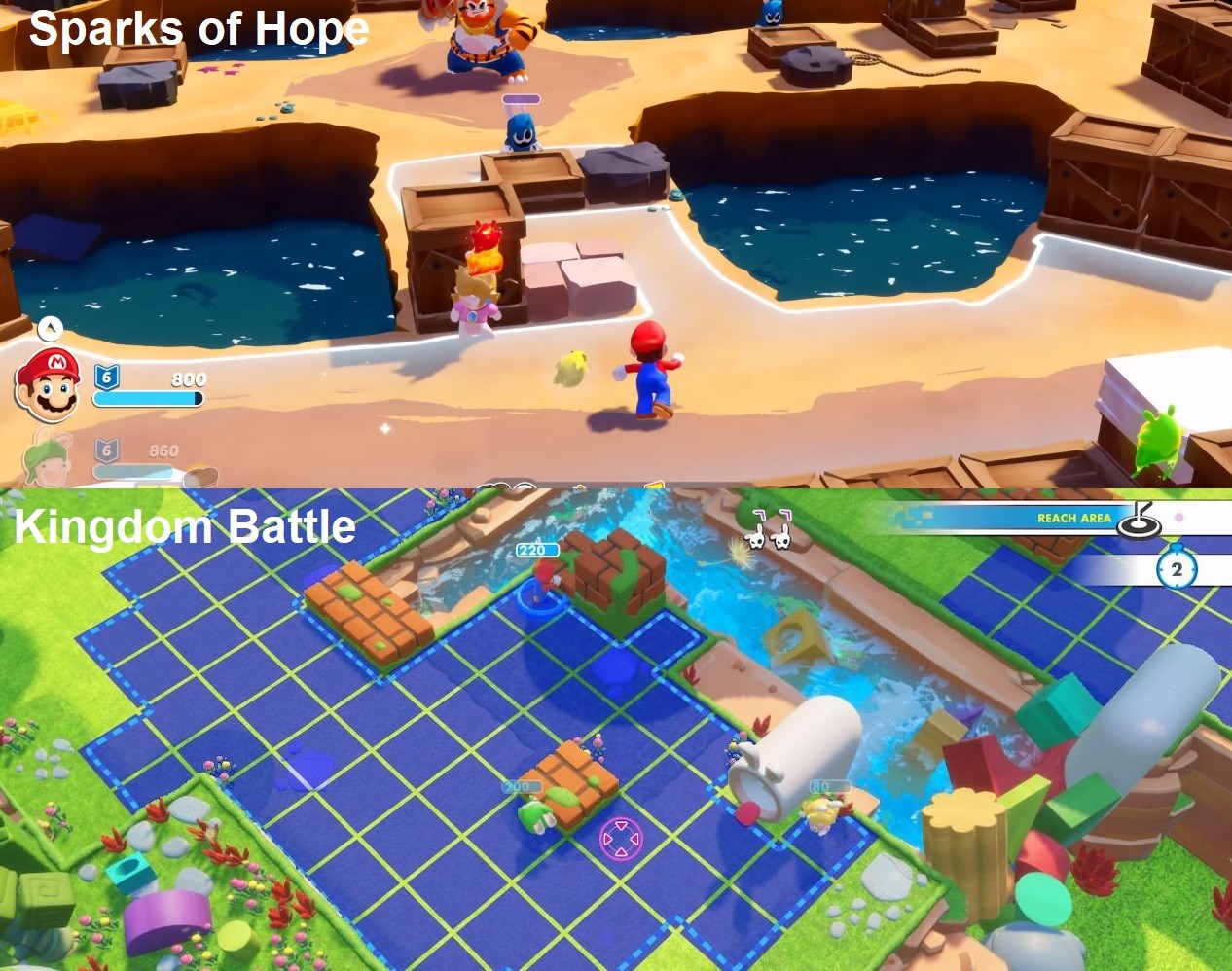
New Hotness
Your quest to rid the galaxy of Cursa’s Darkmess invasion will play out largely in the same way as the original game. That said, there’s a bit more freedom of exploration allowed, along the way in the worlds where a host of sidequests and collectibles await for you to track down.
The biggest changes in Sparks of Hope come from the combat/main gameplay mechanics. For the most part, the strategic gameplay should feel instantly familiar. The first bit of the game (a prologue of sorts) is there to get you reacquainted with the format while introducing some of the new mechanics this time around.
1. Movement – Sparks of Hope gets rid of the tile/grid movement system that’s such a staple in these kind of strategy games. Instead, you’re given a clearly notated boundary (a blob of movement), and you’re able to roam freely within that area. Even better, there’s no real limit on movements either. You can move around the map inside your area at will, without having to commit to specific spot until you fire your weapon.
So yeah, you can use your Sparks, items, Dash/Team Jump abilities, or Special moves, reposition yourself and then fire your weapon. Once you utilize your main weapon, however, you’re locked into place and movement ceases.
It’s a level of freedom not normally afforded in these types of games. Hell, in some games you can’t even go back to your starting point once you’ve made a movement, forcing you to readjust your strategy and stay committed (Fire Emblem and XCOM were like this at one point). It’s pretty great, and adds another layer of strategy to the maps. While I’m not sure the style would work for every strategy game, it feels perfectly suited for the world of Mario and what fans are used to there.
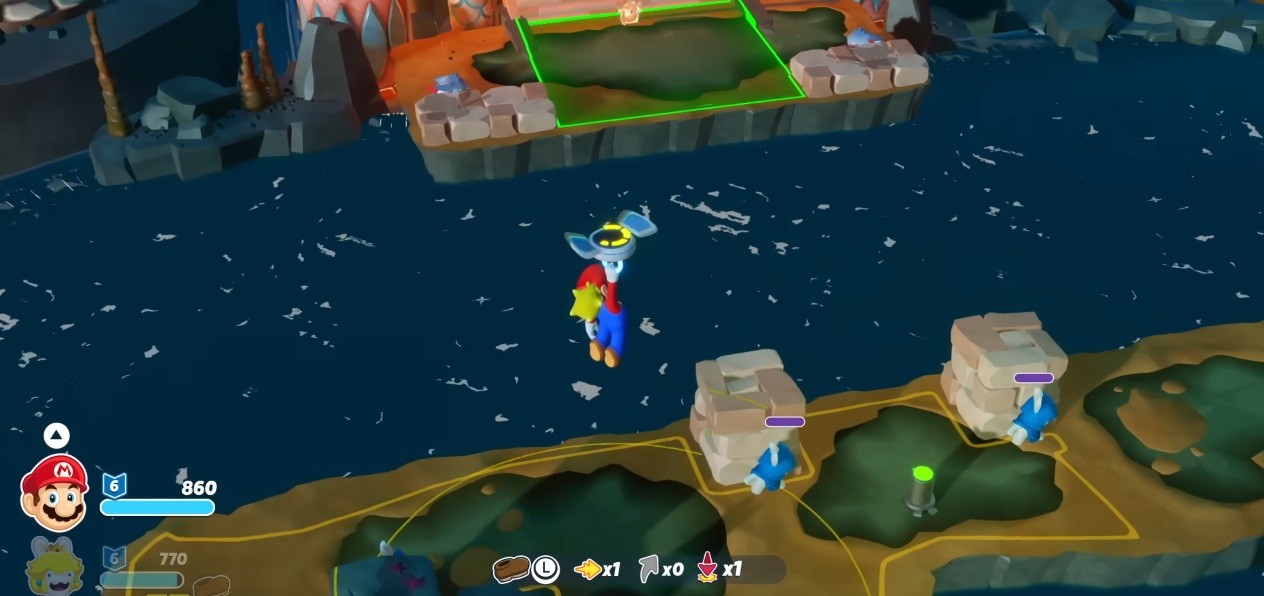
2. Team Jump and Dash – Team Jump and Dash (first game called them “Slides”) make a return as well, but have been altered a bit. When you utilize the Team Jump ability, initiated by having one character standing next to another, you’re able to make leaps over obstacles, up onto another level of the map, or simply expand your range of movement beyond the current confines.
Unlike the original game, however, you have a bit more freedom here as well. You no longer have to select your landing point and watch the animation play out. Instead, you’re propelled into the air where you hover and can zoom around the map for a limited amount of time. Even once you land you’re given a little bit of room to move around so you can ensure you get to cover.
Dash allows you to slam into an enemy (or string of enemies) if they’re within your movement range. This is neat as it gives you the chance to deal out some extra damage without bringing out your primary weapons, while also flipping over enemies you can then pick up and toss (e.g. Bob-ombs can be thrown to explode and cause damage further away, and Goombas can be tossed off the map entirely).
Best of all, neither of these cost you any action points. So you can do either, or both, of these extra movements while still roaming the map and settling in for an attack or specialty move. It’s an interesting combination of real-time action along with the turn-based strategy elements.
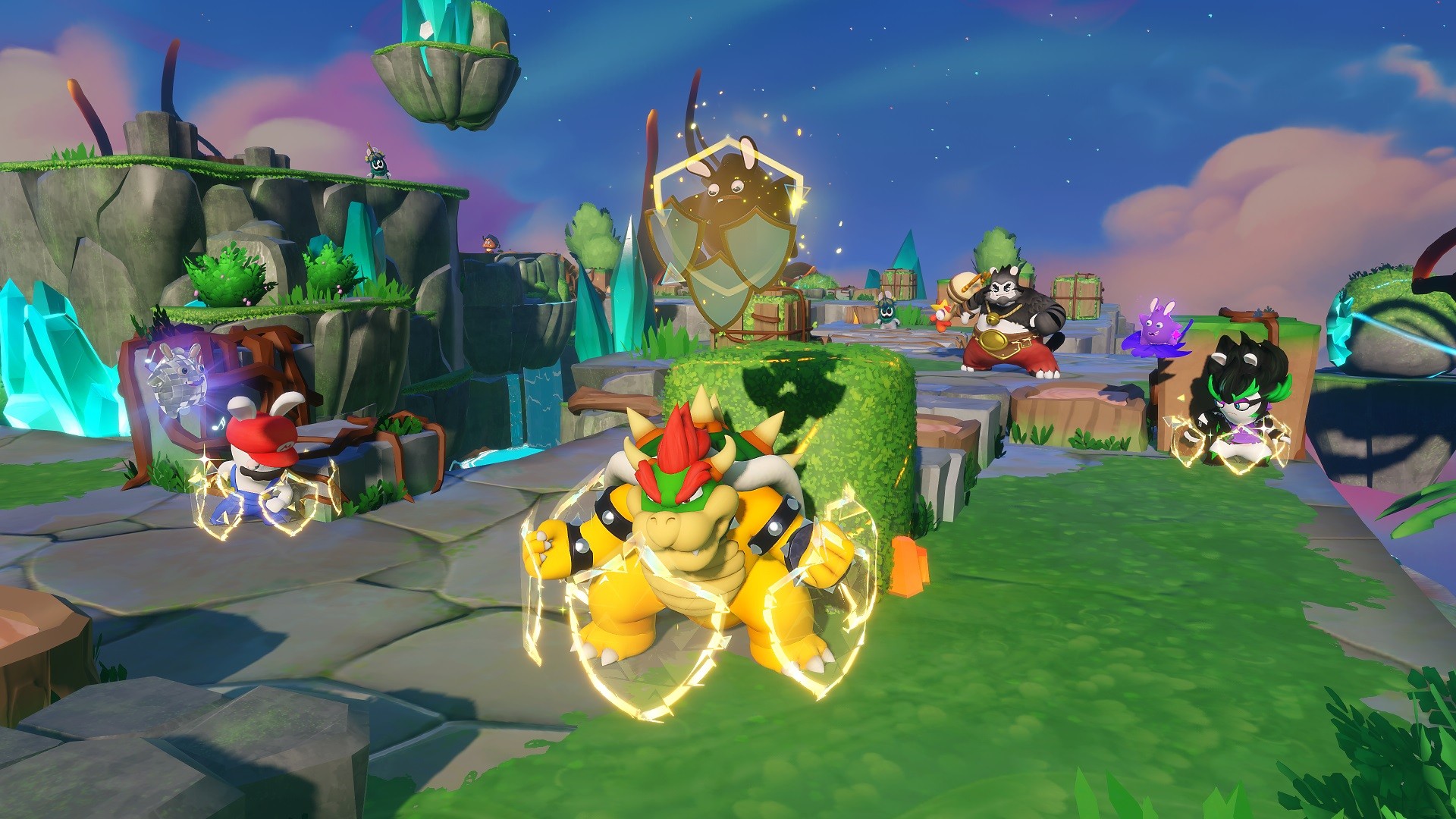
3. Sparks – The titular Sparks in Sparks of Hope have a purpose that goes well beyond the story of the game. Much of the game is dedicated to rescuing these little creatures, but once you do, they serve a bigger purpose on the battlefield.
Different Sparks have different abilities, which you can equip on characters and swap around at will. Some provide bonuses to health for a set amount of rounds, others buff up your defenses/attacks, while others allow your weapons to fire status effect ammo (fire, ice, poison, etc). These are important as certain enemies will have unique weaknesses, and using the Sparks appropriately will ensure you’re doling out maximum damage.
I loved their inclusion. It’s a neat way to take a familiar gameplay mechanic, but making it feel new. Rather than simply using items, or entirely different weapons to equip, you can now use these Sparks to fulfill that role. Being able to move them freely about each character (even at the start of combat), means you can test out any number of combinations with your team for the best result.
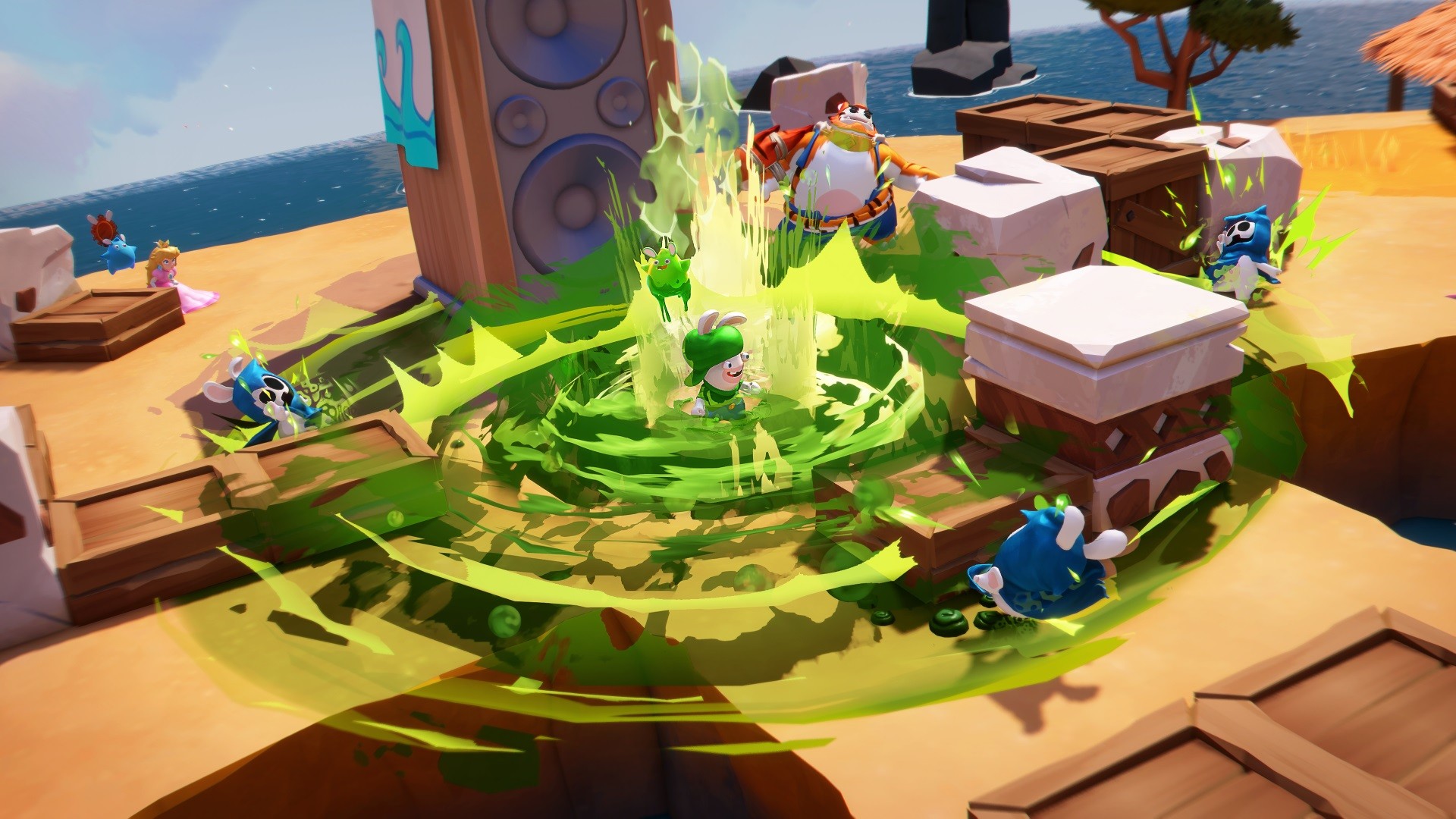
The Freedom to Play
As I’ve mentioned, most of the new stuff added into Sparks of Hope is designed to give players a greater sense of freedom than ever before. While some die-hard strategy fans might feel like these elements go too far, I felt like they added a great deal of depth to the game/franchise.
One of the things I love in any strategy title, is the ability to try out a variety of tactics. Sure, there’s a “direct” way to victory (especially early on) that certainly helps younger players stay on top of things, but Sparks of Hope does a great job of letting individuals play how they want.
Just a quick example of something from my playtime early on. The game regularly emphasizes the need to park your character behind cover before ending your turn or firing your weapon. It makes a lot of sense, as leaving a character out in the open leaves them far more vulnerable to attacks during the enemy turn. This is par for the course in these kind of strategy games.
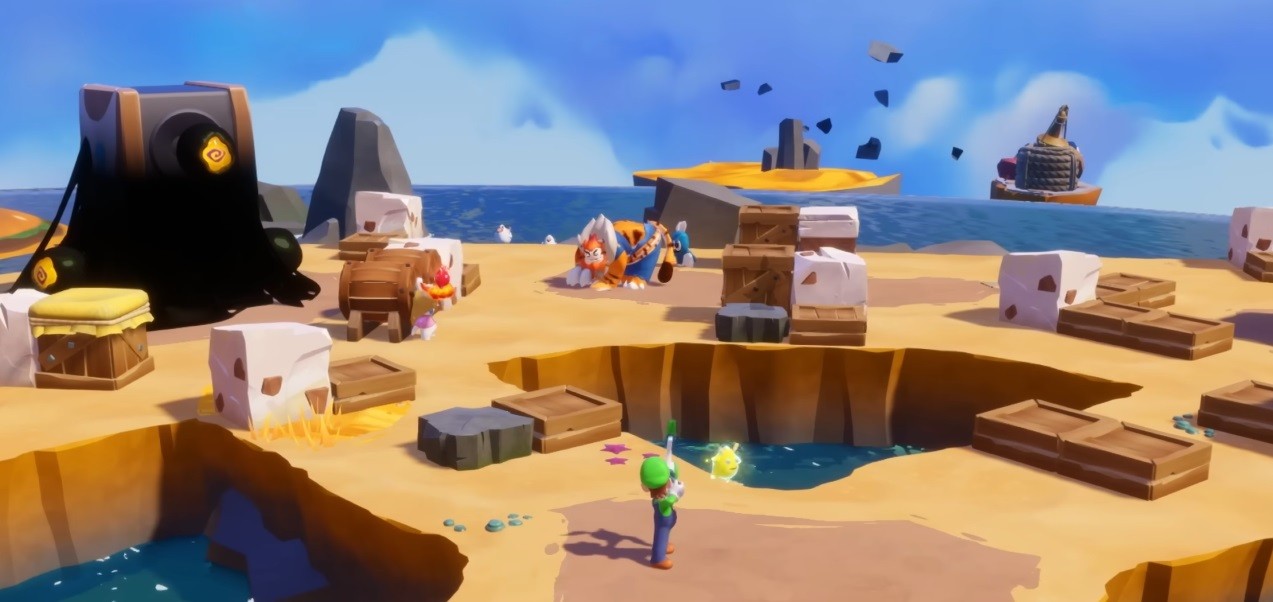
Thanks to the more free-form movement options in Sparks of Hope, however, a new layer of strategy opens up. There were times where none of my characters could move far enough to make for a successful attack, but they were close enough to each other to allow for one of them to use the Team Jump ability! To do so, however, meant leaving one party member completely out in the open. By taking the risk, I was able to jump over to a more prime location, allowing me the chance to hit the enemy from a better position.
This may seem like a simple thing, but there’s something incredibly satisfying about having a risky strategy pay off. Even better when the game rewards you for thinking outside the box. Sure, such things don’t always work out in the end (I died plenty of times trying out some questionable tactics late in the game to see what I could do), but the ability to even try these things is a testament to the game’s design and level of depth.
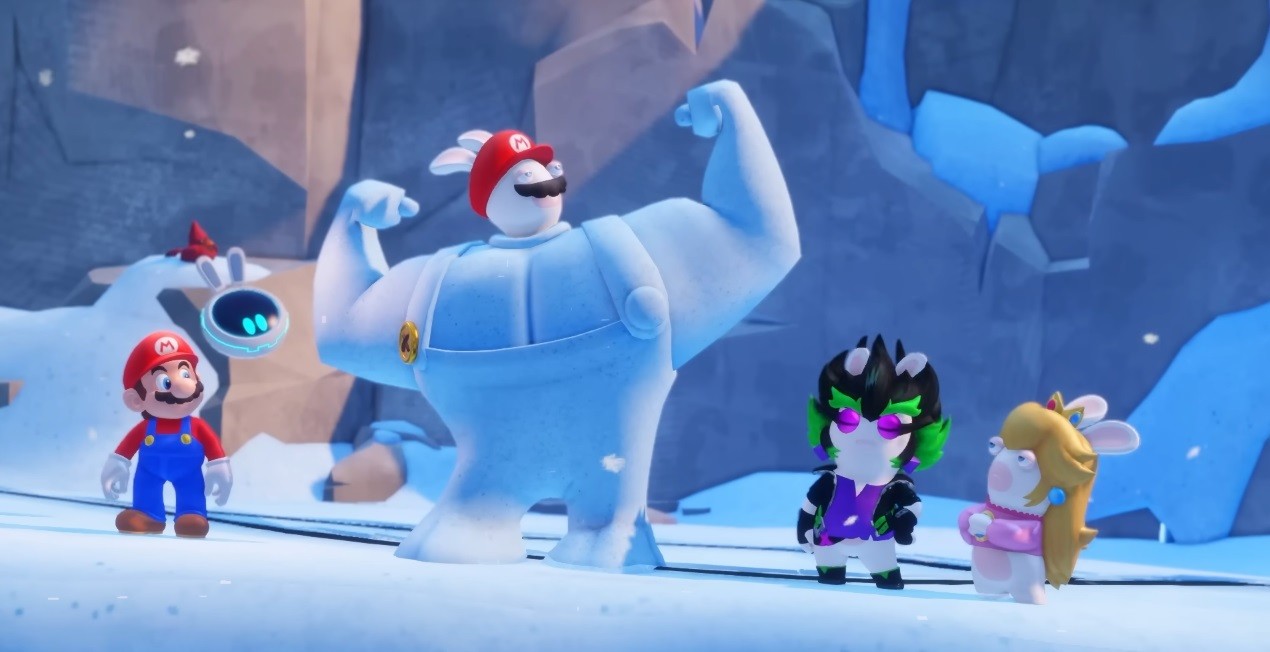
Quibbles
Overall, Mario + Rabbids Sparks of Hope is pretty damn great. It’s easy to pick up and play and filled with tons of fun and new lore to uncover. There are some minor problems, however, I suspect gamers might want to know about.
For one, the latter part of the game can feel a bit repetitive. It’s a problem many turn-based strategy title run into, as you reach a point where you’ve encountered just about every different enemy type and there are only so many ways to make the combat map feel different.
Normally, the games are able to fall back on their story/RPG elements (e.g. Fire Emblem, Final Fantasy Tactics, XCOM) to keep players engaged as they grind through towards the finale. Again, while Sparks of Hope‘s story is fun, I can’t say it’s highly compelling either. Even so, the combat is fun, and quick, enough that it isn’t a huge problem. Hell, you can even run around/escape combat encounters outside the main story if you’re really tired of it.
Secondly, the game does seem a bit easier than expected. Maybe it’s due to the updated mechanics and freedom, but on its regular difficulty setting, I rarely found myself racking my brain for a better strategy. Thankfully, you can change the difficulty settings on the fly and at the start of every battle. So if you want to make those roaming enemy encounters a bit more interesting, you can step those up individually.
These issues aren’t deal breakers by any means, but something to keep in mind as it might adjust how you play.

